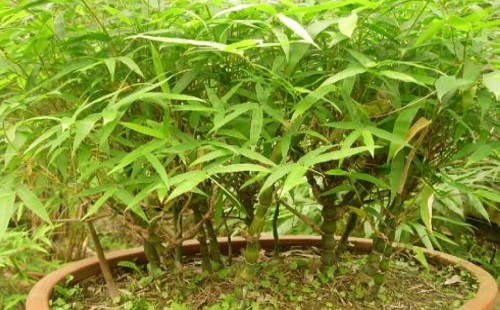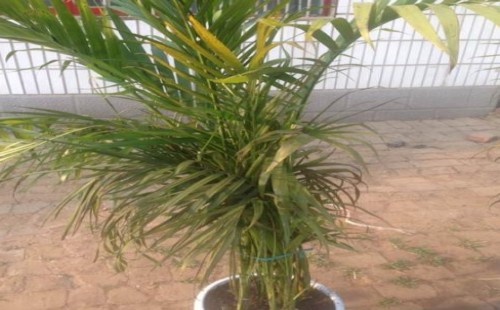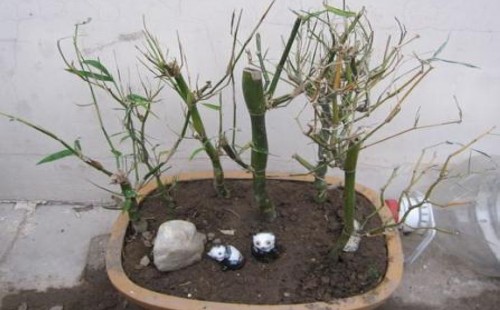What if the leaves of potted bamboo are dry and yellowed?
Potted Phyllostachys pubescens is often of ornamental value for its elegant plant type and emerald green leaf color. However, once the leaves become dry or yellowed, it will greatly reduce the ornamental value. Obviously, if this happens, there must be something wrong with the growth of the plant. However, the dried or yellowed leaves of Phyllostachys pubescens often appear in summer, so we need to investigate the cause in time, take measures to deal with it, save it as soon as possible, let it spit green again, and show it in a beautiful manner.

Through practice, it is found that the leaves of Phyllostachys pubescens are prone to dry or yellowing in summer, mainly due to environmental discomfort. On the other hand, the discomfort of the environment is often caused by many factors. Generally, the growth environment of potted Phyllostachys pubescens was destroyed when there were long-term hot sun exposure, insufficient air humidity, insufficient nutrients in the basin, suffering from diseases and insect pests and other factors. As a result, potted Phyllostachys pubescens does not adapt to the environment, so it often shows the phenomenon of withered leaves and yellowing. Next, let's take a look at the details.
The light is too strong
Many potted flower plants are afraid of the hot summer sun exposure, even some of the more drought-tolerant plants, often because of long-term exposure to the hot sun and a variety of growth problems. The Buddha belly bamboo is no exception, if it is placed outdoors for a long time, under the scorching sun, the evaporation of water in the potted soil and branches and leaves is very large. For a time, the root system can not effectively supply water, and the plant will enter a state of self-protection due to lack of water, and the branches and leaves will often reduce water consumption by drying up or yellowing, or even falling leaves. Therefore, in view of this situation, we should take shading and cooling measures for the plant in time.
Second, air drying
In the same way as excessive light, plants need to consume a lot of water in summer. The original leaves of Phyllostachys pubescens are closely related to the humidity of the air, and the moisture in the leaves and the water in the air tend to form a balance between evaporation and absorption. Usually, only when the air humidity and the evaporation of water in branches and leaves are in this equilibrium state, the plants can often maintain normal growth and will not grow badly because of water problems. If the summer temperature is too high, the weather is too hot, the light is too strong and other factors to break this balance, especially when the air humidity is too low, then the leaves will become dry or yellowed. Therefore, we need to replenish water for plants in time, especially to spray water on branches and leaves to cool down and moisturize. The situation can often be improved only when the air humidity is appropriate.
Third, lack of nutrients
If the potted Phyllostachys pubescens is not fertilized in time after being raised in the pot for a long time, the plant will be unable to get additional nutrients after the depletion of nutrients in the potted soil, then it is easy to have growth problems, such as weak growth of new shoots, premature yellowing of old branches and leaves, withering and so on. In fact, this is also a way of self-rest of the plant. Because there are not enough nutrients to maintain normal growth, plants tend to reduce their branches and leaves to save nutrients to maintain life. This is also a typical feature of self-protection. Therefore, we carry out topdressing in time, but the fertilization concentration should be low enough to be thin, otherwise it will cause fertilizer damage and deepen the symptoms of the disease.
IV. Diseases and insect pests
If the potted Phyllostachys pubescens is kept in a hot and humid environment for a long time in summer, and the ventilation is not very smooth, the plant is very easy to breed and infect a variety of diseases and insect pests. When the plant is attacked by these diseases and insects, the plant will often show the phenomenon of withered branches and leaves, yellowing, and even fallen leaves. Once it is found that the plant is infected with diseases and insects, especially on the branches and leaves, we should spray drugs on it in time to kill bacteria and insects.
Of course, another situation is that when the temperature is too high in midsummer, the plant will go into dormancy when it is unbearable, thus the branches and leaves will be withered and yellow. For this case, usually the normal phenomenon in the process of plant metabolism, usually only need to spray more water.
Time: 2019-05-30 Click:
- Prev

What if the leaves of potted Phyllostachys pubescens turn yellow?
As a kind of foliage landscape plant, potted Phoenix tail bamboo can be placed not only in indoor living rooms and corridors, but also in public spaces such as offices, which can often play a good beautifying effect on the environment. And keeping green for a long time is its biggest viewing bright spot.
- Next

Control measures of withered and yellow branches and leaves of potted Phyllostachys pubescens
In the last article, the editor has introduced the phenomenon that the branches and leaves of potted Phyllostachys pubescens are withered and yellow due to improper maintenance and management. In order to avoid the phenomenon of withered and yellow branches and leaves of Phyllostachys pubescens, today I would like to share with you the relevant prevention and control measures. So, how to prevent and cure the withered and yellow branches and leaves of potted bamboo?
Related
- Fuxing push coffee new agricultural production and marketing class: lack of small-scale processing plants
- Jujube rice field leisure farm deep ploughing Yilan for five years to create a space for organic food and play
- Nongyu Farm-A trial of organic papaya for brave women with advanced technology
- Four points for attention in the prevention and control of diseases and insect pests of edible fungi
- How to add nutrient solution to Edible Fungi
- Is there any good way to control edible fungus mites?
- Open Inoculation Technology of Edible Fungi
- Is there any clever way to use fertilizer for edible fungus in winter?
- What agents are used to kill the pathogens of edible fungi in the mushroom shed?
- Rapid drying of Edible Fungi

